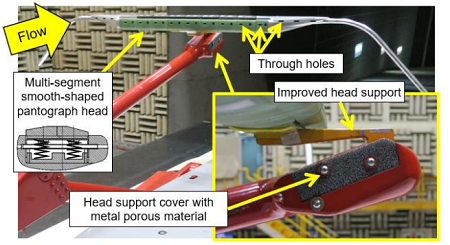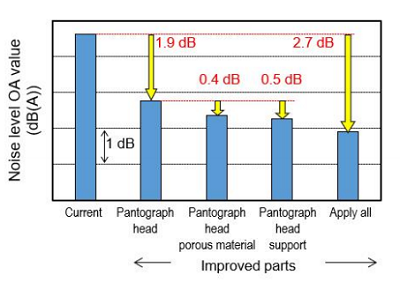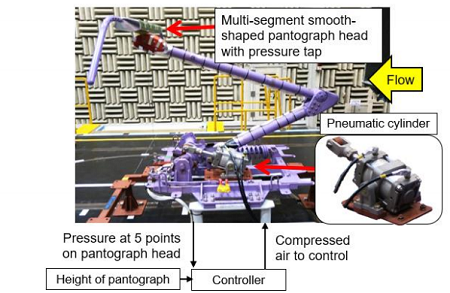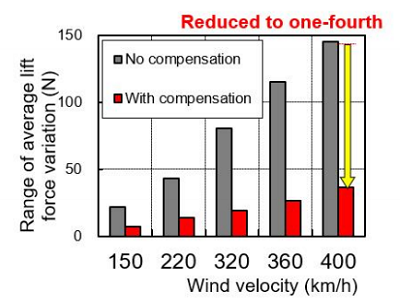20. Aerodynamic noise-reduction measure and average lift force compensation mechanism for a Shinkansen pantograph
Due to the increase in the speed of the Shinkansen, measures to reduce the aerodynamic noise caused by pantographs are required. Therefore, focusing on the pantograph head and head support, which are the main sources of the noise, the pantograph head and head support detailed below have been developed: (1) a multi-segment smooth-shaped pantograph head capable of both aerodynamic noise reduction and compliance performance, and (2) a low-noise head support combining head support cover applying metal porous material and an improved head support to set the pantograph head position to the upstream side (Fig. 1).
It was confirmed by a wind tunnel test that these developments could reduce the aerodynamic noise by 2.7 dB (Fig. 2). Please note that an aerodynamic noise reduction effect can be obtained to an extent by applying just one of these developments individually (Fig. 2).
The average lift force compensation mechanism is used to suppress lift force variation, which tends to become larger for a pantograph head having a smooth-shaped cross section with emphasis on low-noise performance. The lift force variation is compensated by estimating the average lift force of the pantograph from the pressures at five points on the pantograph head surface and by use of a signal to indicate the height of the pantograph head, controlling a pneumatic cylinder mounted on the pantograph and adjusting the static uplift force (Fig. 3).
With this mechanism, it was confirmed in wind tunnel tests that the range in variation of the average lift force could be reduced to about one fourth that of the conventional mechanism when the wear on the contact strip, working height, and attack angle were changed (Fig. 4).
The average lift force compensation mechanism will help in the development of a low-noise pantograph with high current-collection performance.




